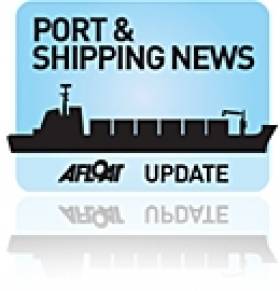Displaying items by tag: Arklow Manor
To the Manor Born as Arklow Vessel Undergoes Dry-Docking
#DRY-DOCKING –One of the largest vessels of the 40-plus Arklow Shipping Ltd fleet, Arklow Manor of 9,682grt/14,008dwt entered the dry dock in Dublin Port yesterday, writes Jehan Ashmore.
The 139m dry-cargo vessel docked in Graving Dock No.2, though the facility located within Alexandra Basin actually consists of a single facility since the older and smaller adjacent Graving Dock No. 1 was in-filled several years ago to create more hard-standing space for freight vehicles.
Arklow Manor has four holds that can handle various cargoes, among them grain (total capacity of 18,110 m3). She is the lead ship of a five 'M' class vessels that was completed in 2009 from the Mokpo Shipbuilding Ind. Co in South Korea. Earlier this year one of her sisters, Arklow Marsh also underwent dry-docking at the same facility.
Both these vessels belong to a majority of ships (ranging from 3,000 tonnes) that are registered in Arklow, where the company headquarters manage the Irish flagged fleet. The remaining Dutch flagged vessels are managed by Arklow Shipping Nederland based in Rotterdam, which is also the port of registry for these ships.
























































